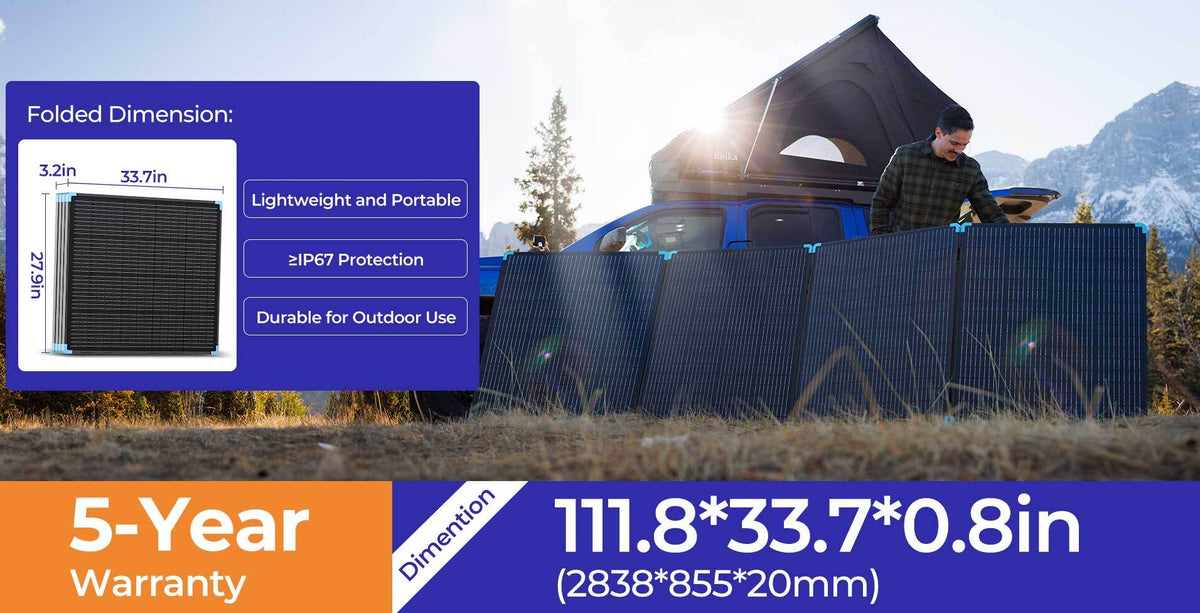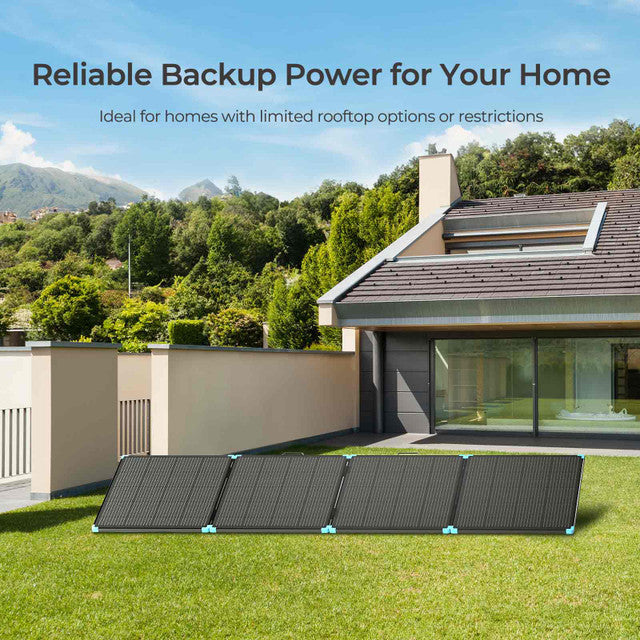12V Portable Solar Suitcase Lightweight 400W/300W/220W/100W
- At least 17% Smaller and lighter than before.
- Industry-leading efficiency with durable fiberglass construction.
- It is IP67-rated with robust kickstands built for outdoor use.
- 3-Year warranty on materials and workmanship.
- Sets up in one minute and works with most portable power stations.
12V Portable Solar Suitcase Lightweight 400W/300W/220W/100W - 400W is backordered and will ship as soon as it is back in stock.

















400W Lightweight and Portable Solar Suitcase
A lightweight and durable high-wattage solar suitcase with robust kickstands, designed for reliable performance wherever you need it.

Keep Your Batteries Ready for Outages
A charge controller is required to connect the solar suitcase to your battery system for safe and efficient charging.

Instant Backup Power
Easily pairs with a portable power station for quick, plug-and-play emergency backup power.

Robust Structure for Consistent Panel Output
Sturdy, rust-resistant kickstands ensure optimal panel positioning for maximum energy generation. Backed by an industry-leading warranty, the panel is made with durable materials for long-term reliability.

Built for Long-Term Outdoor Use
Constructed with premium materials to ensure years of reliable performance, even in harsh conditions.

Protective Case

Fiberglass Reinforcement

Corner Protection

ETFE Coating
Exceptional Efficiency
Maximizes energy output with 23% cell efficiency using an advanced cell layout for superior energy conversion.

Uninterrupted Energy Production in Shaded Conditions
Parallel wiring minimizes efficiency loss caused by shading on individual panels, ensuring reliable energy production.

See the Power in Action
Package Includes
400W Portable Solar Panel
user manual
Ewarranty card
100W N-type Lightweight Portable Solar Suitcase
220W Lightweight Portable Solar Suitcase
300W N-type Lightweight Portable Solar Suitcase
400W Lightweight Portable Solar Suitcase
Warranty & Certifications











































